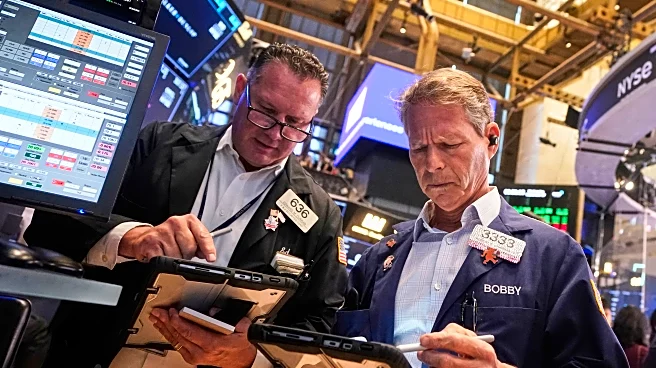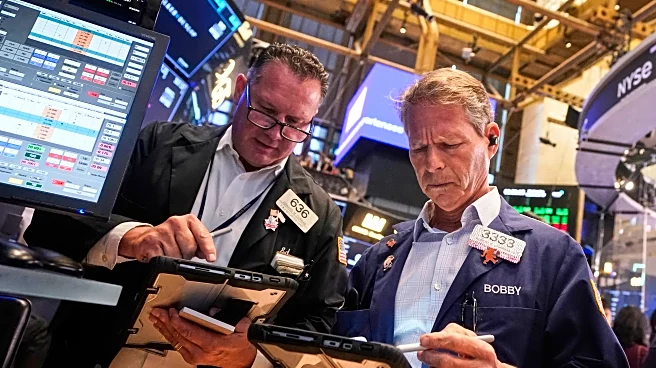What's Happening?
U.S. stock markets rebounded on Friday, ending a three-day losing streak. The S&P 500 rose by 0.6%, the Dow Jones gained 299 points, and the Nasdaq added 0.4%. This recovery was driven by a report showing U.S. inflation at 2.7% for the previous month, aligning with economists' expectations. Despite being above the Federal Reserve's 2% target, the data provided hope for continued interest rate cuts to support economic growth. President Trump's recent tariff announcements, targeting imports such as pharmaceuticals and heavy trucks, added uncertainty but did not significantly disrupt the market. Companies like Paccar and major pharmaceutical firms saw stock gains, while others in the home furnishings sector experienced mixed results.
Why It's Important?
The market's response to the inflation data underscores the critical role of Federal Reserve policies in shaping investor sentiment. The alignment of inflation figures with forecasts suggests that the Fed may continue its rate-cutting trajectory, which has been a key driver of the stock market's recent highs. However, the introduction of new tariffs by President Trump presents potential challenges, as they could lead to higher consumer prices and impact various industries. The balance between monetary policy and trade measures will be crucial in determining the market's direction and economic stability in the coming months.
What's Next?
Investors are now turning their attention to the potential U.S. government shutdown, with a deadline set for next week. While past shutdowns have had limited market impact, prolonged political impasses could delay key economic reports and affect Federal Reserve decision-making. The market will also be watching for further developments on the tariff front, particularly any exemptions or retaliatory actions from trade partners. As these events unfold, market participants will be assessing their implications for economic growth and investment strategies.












